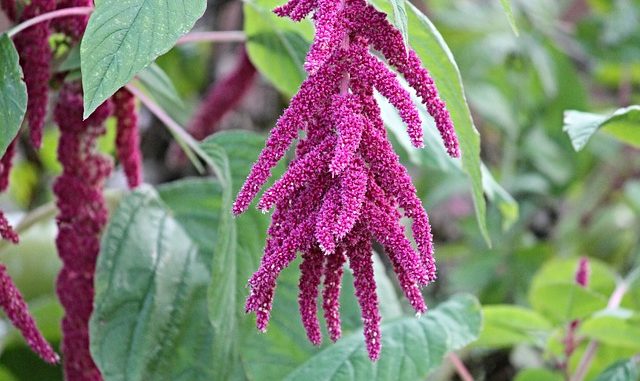
Amaranth is not only a great plant for the garden, it is also extremely nutritious and ideal for anyone adopting a gluten free diet. It is classified as a psedocereal and is a superb source of protein.
Back in history, amaranth was one of the staples of the Aztecs and before them, the Incas and Mayans. For those with coeliac issues, it is a gluten-free alternative.
Using Amaranth
Amaranth is relatively straightforward to use as an ingredient in a various dishes.
The best approach is to soak the seeds in water so they sprout about one to three days before use. Sprouting is a great way of making any grain easier to digest because the starches in the seeds are converted to sugars. It is a process very similar to malting of barley in many ways. It also helps in breaking down difficult to digest nutrients as well like phytate (Gupta et al., 2015).
To cook amaranth, simply add to cold water. Most chefs recommend level of about 1 part grain to either 3 or 4 parts of water. Boil and simmer for 20 to 25 minutes or when all the water has been absorbed.
Traditionally, amaranth is eaten as a porridge and it can be boiled as a porridge or side dish.
We’ve tried amaranth in pasta or as a simple replacement for both rice, couscous and other grains. It works well in risotto and as a sprinkle in salads. The grain also works well in stews, broths and stews where it provides extra thickness and viscosity. You can find the grain in snack bars especially granola ones. The grain can also be added to muesli to supplement other grains, or provide texture for nuts, fruits etc.
The grain is also an alternative to quinoa because both retain their delicate and slightly nutty taste even on cooking where texture is a premium.
Amaranth is ideal as a source of fibre and also protein – use without sparing because it certainly has plenty of health properties. Amaranth flour is used in baked goods, especially for gluten-free purposes.
Nutrition
A cup of amaranth (246 grams) when cooked provides about 9 grams of protein. The pseudocereal also contains plenty of minerals like magnesium, phosphorous, manganese and iron. Apparently, one cup provides over 100% of the daily intake of manganese. As we know, manganese is essential for good immunity and brain health.
References
Gupta, R.K., Gangoliya, S.S., Singh, N.K. (2015) Reduction of phytic acid and enhancement of bioavailable micronutrients in food grains. J. Food Sci., Technol. 52(2) pp. 676-684 (Article)
Leave a Reply